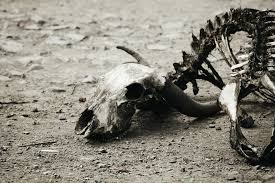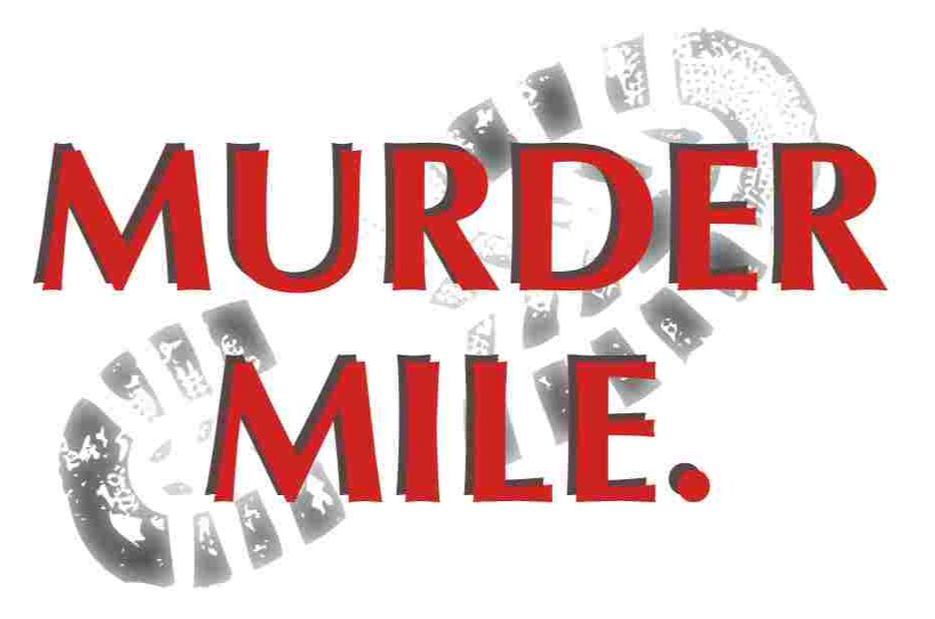|
Nominated BEST TRUE-CRIME PODCAST at British Podcast Awards 2018, The Telegraph's Top Five True-Crime Podcasts, The Guardian's Podcast of the Week and iTunes Top 25. Subscribe via iTunes, Spotify, Acast, Stitcher and all podcast platforms.
This week: decomposition, what happens when a human body decomposes?
Basically, we are nothing but sacks of meat, blood, bone and water, and (excluding any man-made parts like false teeth, new hips and fake tits) the human body is entirely recyclable, we’re a biological miracle and (unlike in our daily lives) our body is the only part of us which does pollute or contaminate our world once we’re gone… thanks to decomposition. Hmm, a sobering thought. So what is decomposition? Before we begin, if you’re eating? Stop. Say “tata” to that Bakewell tart, otherwise you’re about to say “howdy” to last night’s hummus. You have been warned. Decomposition is the natural process in which (in this case, a human body) is broken down into its core chemical components as part of nature’s biological cycle. Once a human body has died and brain death has occurred, as the body can no longer biologically support itself, decomposition begins within roughly four minutes, and follows four stages; autolysis, bloating, active decay and skeletonization. Stage #1: Autolysis, also known as self-digestion; this is when the circulation of our blood and oxygen ceases, and being unable to expel any toxins or waste, an excess of carbon dioxide builds up, causing our internal organs to become highly acidic, and as the cell membranes split, they release enzymes which digest our body from the inside out. Nice. Stage #2: Bloating, as our internal organs are devoured by enzymes, a sulphurous bacteria leaks from our intestinal tract and begins a process of causing the body to effectively melt down, which is called putrefaction. Within the 36 hours; the neck, head, shoulders and stomach turn green and discoloured. Then, as bacterial gas rapidly increases, the face and eyes start to protrude as the face bloats, and the body swells to almost double its size. Next, as the hair falls out, fingernails recede and the skin blisters and marbles, the body finally turns a blackish-green as it reaches… Stage #3: Active Decay: at this point, the body will begin to drain itself of what is known as ‘purge fluid’ – the liquefied waste of our own innards, which will seep from the mouth, nose, anus, or any orifice, as organs, muscles and skin begin to liquefy – in a process known as liquefaction. As most of the body’s soft organs and flesh are digested; hair, bones and cartilage remain. Part of this active decay comes from flies and larvae, who enter the body through exposed orifices and open wounds, and each fly can lay an average of 250 eggs which hatch into maggots within a day. And finally, Stage #4: Skeletonization: the slowest part of decomposition, as - with the body having melted down into a liquid form which seeps into the ground - with nothing else for the enzymes to feed on, our skeletons are reduced to dry husks of calcium and enamel, and the decomposition slows, so the only factor of what speed it decays is the environment itself. Mmm, suddenly necrophilia seems like a viable dating options. Am I right? Am I right? Skin slippage, liquefaction and purification? Yeah, what’s not to like? Dennis Nilsen was right. There are some absolute hotties, who are all single and available, and they’re right under my feet. Hot! So - not that I’m over-eager to take my new deceased date to Nando’s, to wine her, to diner her, to mop up the juices and get her home for a romantic little kiss before she completely dissolved - how long does it take for a human body to fully decompose? This is the timeline after death: 1 to 3 days — the internal organs begin to decompose. 3 to 5 days — the body bloats and the purge fluid leaks. 8-10 days — the body turns from green to red to black as the internal organs liquefy. After several weeks, the nails and teeth fall out. After one month, the body starts to liquefy and the process of skeletalisation begins. Of course, the rate of decomposition entirely depends on factors such as clothing, body mass, burial site, weather, temperature, drugs, alcohol, illness, moisture, acidity of the soil and wildlife and insect population, to name but a few. But, if left alone, in summer, a human body in a temperate and exposed location can be reduced to bones in just nine days. Note to self, at Nando’s, seat sweet seeping Susan near an open window, preferably by an insect zapper and not to near to the grill. Hmm, do you think it’s insensitive to buy her flowers? And finally (ah the end is in sight, you’ll be pleased to know, as you stare at that Bakewell Tart wishing you’d scoffed it before you started this podcast), we ask the question; which parts of the human body decomposes the slowest? So, you’ll probably say the bones? Maybe the teeth too, as calcium and enamel are incredibly tough and durable substances, right? And you’d be right, they are one of the last body parts to decompose. And for forensics teams, this is invaluable for aging and sexing (no, not that way) a corpse, as the pelvis, the skull, the thigh bones and especially the jaw bone which is incredibly dense, these are usually one of the final body parts to decompose… but they’re not the last. The last part of the human body to fully decompose is the prostate in men and the uterus in women; and accompanied by a thigh bone, a skull and a pelvis, these are one of the key factors in a pathologist accurately determining the age and sex of a corpse, even at the very last stages of decomposition. Hmm, second note to self, have a peek at her crotch and double check that Susan is a Susan and a Steve.
If you found this interesting? Check out the Mini Mile episodes of the Murder Mile UK True-Crime Podcast, or click on the link below to listen to an episode.
Michael J Buchanan-Dunne is a writer, crime historian, podcaster and tour-guide who runs Murder Mile Walks, a guided tour of Soho’s most notorious murder cases, hailed as “one of the top ten curious, quirky, unusual and different things to do in London”, nominated "one of the best true-crime podcasts at the British Podcast Awards 2018", and featuring 12 murderers, including 3 serial killers, across 15 locations, totaling 50 deaths, over just a one mile walk
0 Comments
Your comment will be posted after it is approved.
Leave a Reply. |
AuthorMichael J Buchanan-Dunne is a crime writer, podcaster of Murder Mile UK True Crime and creator of true-crime TV series. Archives
July 2024
Subscribe to the Murder Mile true-crime podcast
Categories
All
Note: This blog contains only licence-free images or photos shot by myself in compliance with UK & EU copyright laws. If any image breaches these laws, blame Google Images.
|




